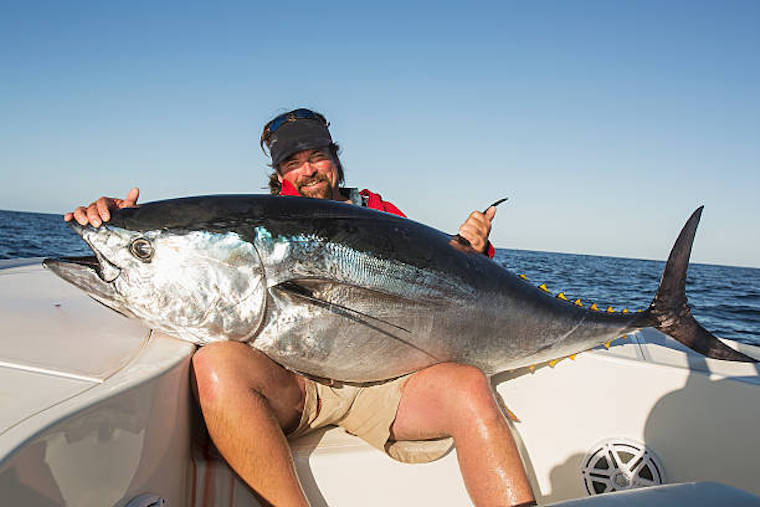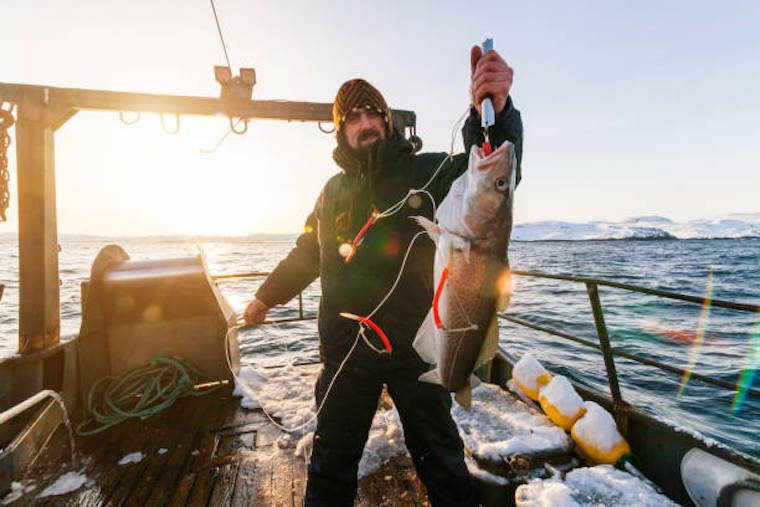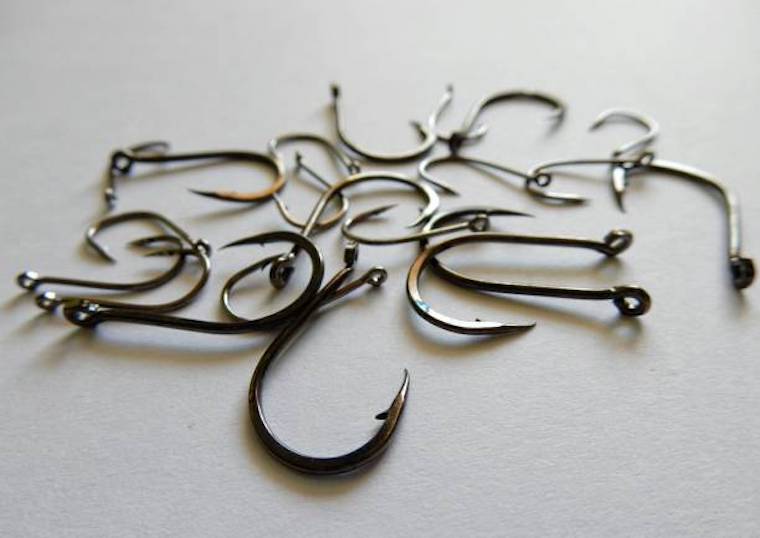Expanding Your Saltwater Fishing Potential
Often we are faced with fish that for a variety of reasons are extra spooky or that just won’t hit a lure. Some of the causes include bright sunlight, clear water and small baits. When this happens the tendency is to downsize the lure and make longer casts to the fish. Many times this works. But there are the times when the fish still don’t hit our lure, even after we’ve thrown everything we got at them. Remember, going smaller, hence lighter with a lure makes those longer casts harder. Sometimes to have greater success we need to use a lure made of materials that are extremely light and provide a more realistic look to the fish. A lure that isn’t heavy enough to be cast in the conventional way.
An alternative way to present or cast the lure to these fish is to change the technique and instead of using the weight of the lure to carry the line, we use the weight of the line to carry a relatively weightless lure. To do this we need to change our tackle and the lure. Yes, I’m talking about fly fishing.
For years fly fishing was considered the domain of the freshwater angler, and it was. Early in the 1900’s there was a very small group of fishermen who started pursuing saltwater fish with fly rods, but it wasn’t until later on, during the middle of the 20th century that fly fishing pioneers like Joe Brooks began popularizing the technique.
Since the 1970’s and 80’s the growth of saltwater fly fishing has been huge, led by fishing personalities like Left Kreh, Bob Popovics, Lou Tabory and others. The quality of the tackle has improved to the point that for many adventurous saltwater fly rodders, no fish is off limits. But, I’m not going to get into blue water fly fishing, but rather a quick and easy way how the inshore saltwater angler can add to his bag of tricks.

Remember, earlier I said we can use the weight of the line to carry the lure. That’s all fly fishing basically is. What’s needed is some basic equipment like a rod, reel, line and flies. The flies are nothing but lures, called flies more as a tradition stemming from the origins of fly fishing when the lure did indeed imitate an insect. In the salt the flies are used imitate bait fish, crustaceans, like crabs and shrimp, and sometimes worms like sand and cinder worms. The materials used in making, or rather tying, flies provide a translucency and realism unattainable with metal, plastic or wood. The motion and texture created can far surpass other artificials.
The most important part of fly fishing is learning to cast. Too often this is shrouded in a mysterious, jargon riddled explanation leaving the first timer to think it’s some type of art form. It isn’t. Fly casting is a skill for sure and just as spin casting and bait casting require different learned skill sets, so does fly casting. The best way, and perhaps the only way to learn how to cast is when you’re not fishing. When you try to learn while you’re fishing the focus always becomes trying to catch a fish and the learning curve becomes greatly lengthened. This is really no different in learning to use a bait caster, for example.
You can approach the learning phase in several ways. One is to use the services of a pro. Not a bad choice if you can afford it since this would jump start the whole process. Another way is to have someone you know, who you know what he’s doing, teach you. This isn’t as easy as it sounds. Many competent amateurs lack the teaching skills needed to convey the concepts.
There are also the many fly fishing clubs that frequently offer clinics for free or at a minimal cost. On the higher priced end are the fly fishing schools like those run by The Orvis Company and LL Bean. But the most common way I see, are people who are self taught. Teaching yourself isn’t a bad route to go as long as you have the space to do it. It has become much easier over the years with the number of excellent DVD’s and books on the market by fishing celebrities like Lefty Kreh or the late Mel Krieger. These DVD’s are easy to understand and illustrates how easy fly casting really is.
Rods and reels. These two items can cause a lot of debate among veteran fly fishermen, each who seems to have their own brand loyalty. In reality, all of the major fly tackle manufacturers make quality rods and reels. In the beginning I suggest keeping things inexpensive, simple and of very good quality. Rods in the $200 range can easily get you started and if need be, you can do okay around the $100 mark. Orvis, Sage, St. Croix and TFO all make rods in this category.
For the beginner the brand is not near as confusing rod sizes and actions. Simply, rods are sized by number, with the higher numbers given to the heavier rods. In other words, a 10 weight is a heavier rod than a an 8 weight. Actions can also be simplified to slow, medium and fast. Without getting into a lengthy discussion, a rod in the fast to medium-fast range is most useful and easy to learn with.
Rod weights in 8, 9,or 10 will cover most fish, with the 8 weight being for the smaller fish, the 9 next and the 10 weight for the larger fish like big stripped bass and the small tunas. Companies like Orvis have some very good information on their website to help in choosing a rod for the species of fish you are most likely to encounter.

Reels don’t need to break the bank either. Ross Reels, Orvis and a few others make quality reels at a reasonable price that will give you a lifetime of use. What you want to look for first in a reel is that it’s saltwater proof. This means machined aluminum and high quality drags at the least. Try to stay away from cast aluminum reels as they tend to have less strength.
Reels of this quality can be had from the low $110’s to mid $200’s. The only other thing you’ll need is a fly line. Start with a floating or intermediate line matched to the rod. In other words, a 10 weight line for a 10 weight rod. Any of the major brands will do the trick. Here again, brand loyalty can run strong among veteran fly casters. Just keep in mind if it’s sold by Scientific Angler, Rio, Orvis or Cortland it’s not junk and will do the job.
Aside from the flies, which you’re best buying locally if possible, the other tackle you’ll need are leaders. The same line you use for conventional fishing will suffice as leader material, but if you want to seal the deal and maybe make things just a little easier on yourself spend the few extra bucks and pick up a couple of pre made leaders.
The very end of the leader where you attach the fly is called the tippet. By having a few varying sizes of mono or fluorocarbon spools, you can keep the leader to its original length when it gets shorter from changing flies or a fish breaking off. The breaking strength of the tippet can also be changed without changing the whole leader to compensate for changing situations of conditions.
Learning this additional fishing method could give you opportunities you didn’t have before. At worse, you’ll experience greater enjoyment. It could become, like it has for many, your preferred fishing method. But whichever direction fly fishing takes you it’s still nothing more than fishing, just with different tackle for different situations.







